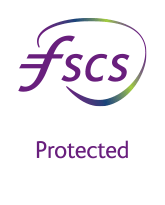Check out our back to basics, easy to understand guide to Cash ISAs.
It may seem innocent enough, but uploading pictures of your child to social media could actually be putting them at risk of identity theft.
A 2021 survey by image rights website PIXSY found that 70% of parents asked were regularly uploading snaps of their children to social media channels, with 42% saying that they now share more about their family lives online than they did before the Covid-19 pandemic.
The term 'sharenting' is used to describe parents who share photographs, stories and personal information about their children online, and the number of those who do so is on the rise. In sharing family snaps on social media, parents may be unwittingly leaving their children open to identity theft. This could mean that when they grow up and join the workforce, scammers will find it easier to obtain the details needed to commit fraudulent acts such as opening bank accounts and applying for credit.
More worryingly, there could be no indication of a crime being committed in their name until their first credit check, by which time it will be too late.
So, how can you help protect your child's identity online? Below, we’ve listed four steps that you can take to help minimise the threat of cyber-crime:
Check your privacy settings
Make sure all of your accounts are set to private. This means only those who you have approved can view and follow your movements online. By doing, you are minimising the risk of criminals being able to gain access to your digital footprint or share on pictures of your children. It is also a good idea to ensure location tags are turned off, as this can highlight to criminals where you and your children live or if you're away from home.
Be smart about your passwords
Avoid any passwords which could easily be linked to you or your family. Surnames, school names, your grandma’s birthday, the town you live in and even the name of your favourite football team can be guessed by fraudsters. All it takes is close analysis of the content you post regularly to spot a trend. Use a mixture of letters, cases, numbers and symbols and try to alternate passwords for different accounts. Most importantly, never keep a note of it in places like a wallet or your phone (unless via an encrypted password app).
Try to change passwords regularly and for an extra layer of security, ensure multi-factor authentication for your accounts is switched on where this is an available option.
Post mindfully
Take a moment to pause consider whether your posts include any information that could identify you or your family, such as a letter with a school crest on or a house number in the background of your snaps. Fraudsters comb photos for these tiny details to build up a picture of your behaviour, location, and habits.
It may also pay to keep track of what your friends and family post, as criminals can also access your personal details through them. If you feel uncomfortable with a particular post or image, make sure you ask them to take it down or change their privacy settings.
Be cautious of public Wi-Fi and hotspots
We all like to be connected wherever we go nowadays, and it may be tempting to tap into the complimentary Wi-Fi available in airports, trains and hotels. However, these connections can be notoriously insecure, especially when you are sharing private information. Use your mobile data instead - that’s what it is there for after all!
For further information on staying safe online, visit our fraud and online security hub.
Article reviewed September 2023.






